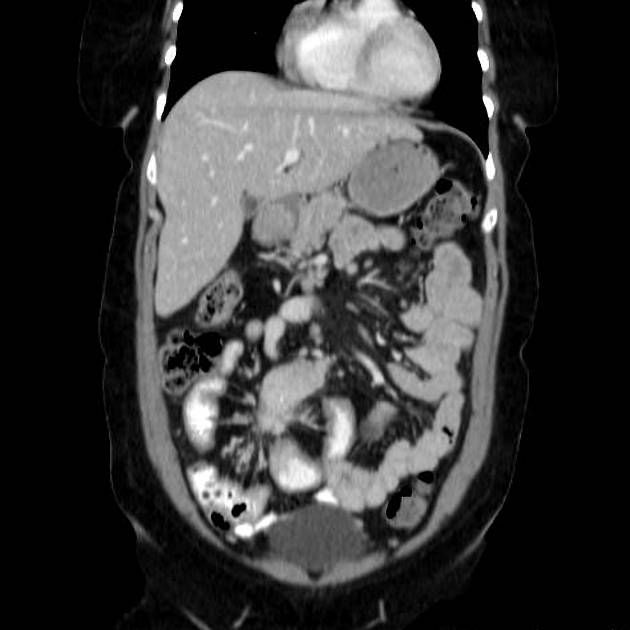Carcinoid syndrome refers to a spectrum of symptoms that result from excessive hormone (mainly serotonin) secretion.
On this page:
Epidemiology
Occurs equally between the sexes, most commonly in the 40-70 year age group 3.
Clinical presentation
Diarrhoea is the most common and earliest symptom, but others include flushing, right heart failure, pain and bronchospasm 4.
Pathology
Carcinoid syndrome can occur as a paraneoplastic syndrome in the context of a neuroendocrine tumour. An analysis of the data from 1973 to 1997 found that the small bowel was the most common site of carcinoid tumour. Another retrospective analysis of neuroendocrine tumours in the United States from 1973 to 2004 showed that the rectum was the commonest site of carcinoid tumour, followed by the small bowel (26%), stomach (12%), colon (8%), duodenum (8%), caecum (6%) and appendix (6%). The presence of the carcinoid syndrome often indicates hepatic metastatic disease, however, extraintestinal neuroendocrine tumour can also cause carcinoid syndrome without hepatic metastasis as serotonin secretion can bypass the enterohepatic circulation 5.





 Unable to process the form. Check for errors and try again.
Unable to process the form. Check for errors and try again.